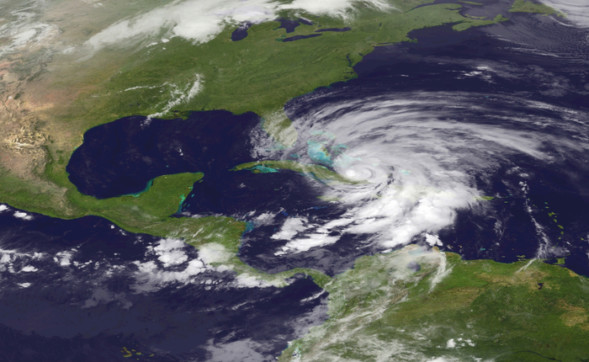4 Step Risk Planning for Event Fundraisers Inspired by Hurricane Sandy

As Hurricane Sandy relief efforts continue, I’m reminded of the significant negative impact that poor weather can have on a fundraising event. In New York City, the ING NYC Marathon was completely cancelled while the city recovered from the after effects of Sandy.
For nonprofits whose primary source of revenue comes from a single fundraising event, the consequence of a weekend of bad weather could be closing your doors.
Part of our job as event fundraisers is to plan in advance for the potential risks that could derail the success of our event and the mission of our organizations. Proactive risk planning helps you avoid potential challenges that may face your event and gives you the opportunity to devise a action plan before a challenging situation escalates into a crisis.
Step 1: Identify Potential Risks
Identifying risks is an exercise of playing “What if…” The overall objective is to determine those “what if..” scenarios that could actually happen.
Here are some examples of common risks to get you started:
- Foreseeable bad weather – rain or snow on event day
- Unforeseeable bad weather – flash flood or tornado
- Catastrophe immediately before event – Hurricane
- Lose access to our starting line / finish line / breakpoint venues
- Critical in-kind sponsor drops out or fails to deliver – water, food, port-a-lets
- Non-critical but important sponsors drops out – Entertainment
- Too many people registering for your event – venue size, Logistical supplies needed
- Critical heath emergency during the event – heart attack, stroke, accident
- Key staff, volunteer or volunteer group is a no show
- Bad PR in advance of your event
Step 2: Determine the Likelihood and Impact of Risks
Once you feel comfortable with your list of risks, it’s time to think about the likelihood that a risk would become a reality and also what impact that situation could have on the overall financial and logistical success of your event. I also recommend assigning a numerical value to both likelihood and impact to help you quantify those risks that you need to prioritize and develop specific contingency plans.
Examples of Impact:
- Event Day is Cancelled – How much $$$ does your event bring in on event day?
- Many technologies have disrupted service during critical fundraising times – How much $$$ does your event raise the week leading up to event day?
- If critical in-kind sponsors are unable to fulfill their commitment – What would the cost be to purchase those supplies?
Step 3: Develop Mitigation & Contingency Plans
Once you’ve identified your risks and assessed a likelihood and impact, you should focus in on developing documented mitigation and contingency plans for those risks that have the highest chance of becoming a reality AND have the greatest impact. If you have assigned numerical values to these items, then you can easily surface these priorities to the top of the list by multiplying your Reality Assessment and your Impact Assessment to create a numeric value for priority.
Mitigation plans should address strategies to avoid the risk becoming a reality. For example, to avoid having too many people register for your event, you place a registration cap on your event registration
Contingency plans should address the immediate actions that should be taken once a risk becomes a reality. They need to be actionable and should have specific people or roles assigned.
I’m a fan of using spreadsheets to help you with this sort of documentation. Here is an example of the columns that I’ve used in the past to help organize this information.
- Column A – Description of Risk
- Column B – Numeric Assessment of the likelihood that risk will become a reality (3 =very likely, 2= likely, 1= not so likely)
- Column C – Description of Impact
- Column D – Numeric Assessment of Impact (3= Really Bad, 2 = Bad, 1 = not ideal but ok)
- Column E – Priority = Column D x Column B
- Column F – Mitigation Plan Description
- Column G – Contingency Plan Description
Step 4: Work your Risk / Contingency Plan
Find a regular time to visit your plan. The likelihood and impact of a risk will change with time so scheduled check in points ensure that other risks are not bubbling up to the top that you had not planned for in your original contingency plan and that everyone is still comfortable with your contingency plans.
What types of issues have you encountered as an event planner? How did you overcome that challenge? What type of planning had you done ahead of time to help relieve that situation in the moment?

